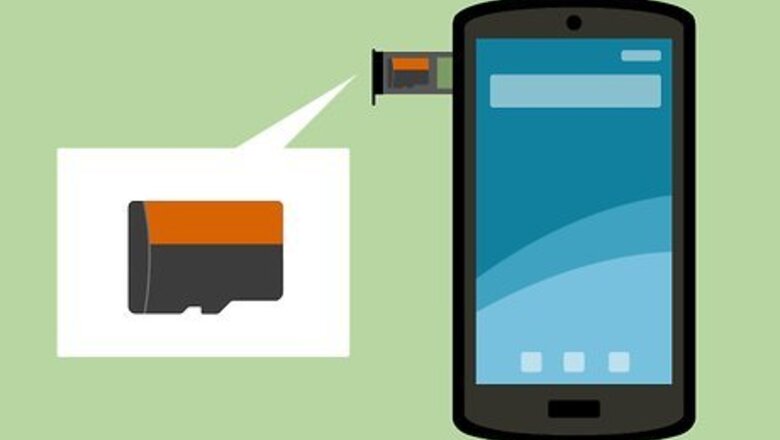
views
On Android

Insert the MicroSD card into your device. This process varies depending on the device, and not all Android devices support MicroSD. No Android device supports standard SD cards. Tablets will typically have the MicroSD card slot along the side of the device. If your phone supports MicroSD, the slot is typically located underneath the battery, though if the battery isn't removable, the MicroSD card may be located along the side of the device.
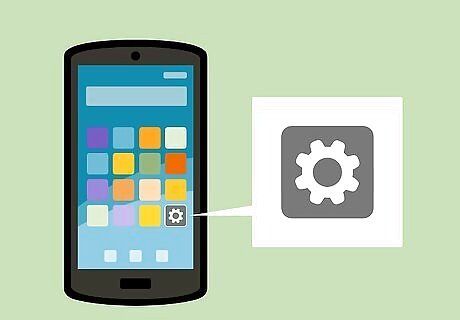
Open your Android's Settings Android 7 Settings App. It's a gear-shaped app in your Android's App Drawer. You can also swipe down from the top of the screen with two fingers and then tap the gear icon to open Settings.
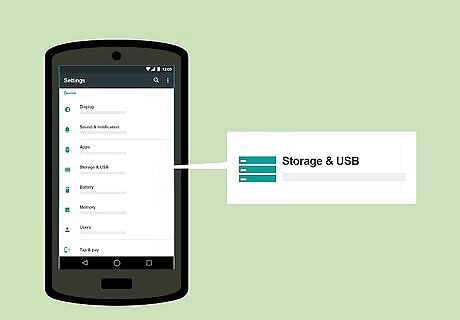
Scroll down and tap Storage. You'll find this option about halfway down the Settings page. On a Samsung device, tap Device maintenance then tap Storage.
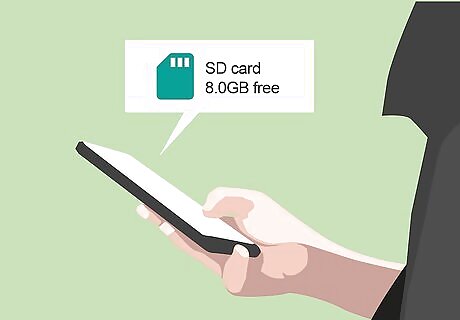
Tap your SD card's name. You'll likely find it under the "Removable" section of the storage page.

Review your SD card's contents. You can scroll through the SD card's folders to view them, or you can tap a folder on the SD card page to view its contents. For example, tapping the Images option will show you additional folders.
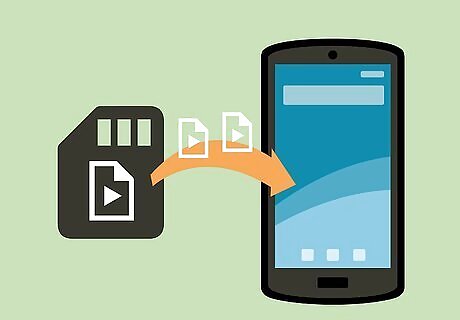
Move files onto your phone from your SD card. To do so: Tap an item that you want to move. Tap ⋮ Tap Move to... or Move Select your Android's internal storage. Tap MOVE or DONE
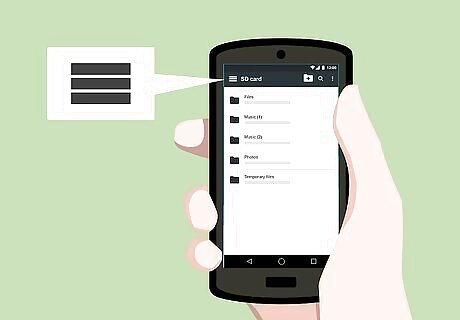
Tap the "Back" button. It's in the top-left corner of the screen. This will take you back to the Storage (or Device Maintenance) page.
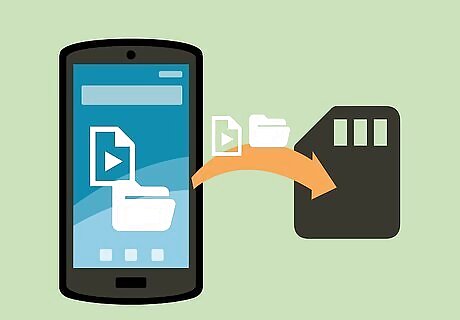
Move files from your phone onto your SD card. To do this: Tap Internal storage Select a file or folder. Tap ⋮ Tap Move to... or Move Select your SD card's name. Tap MOVE or DONE

Format your SD card if prompted. Formatting your SD card is necessary if the SD card was previously used for a device (e.g., a camera) that didn't use the same type of file system as your Android. If you receive a notification that the card isn't working or isn't compatible with your device, formatting it will likely fix the problem.
On Windows
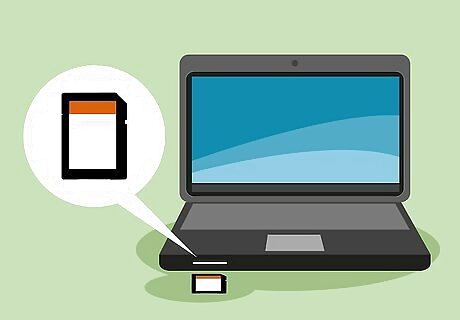
Insert the SD card into your computer's card reader. If your computer doesn't have a card reader, you can purchase an external adapter that connects via USB. MicroSD cards will likely need to be inserted into an SD card adapter to fit into most conventional SD card slots.
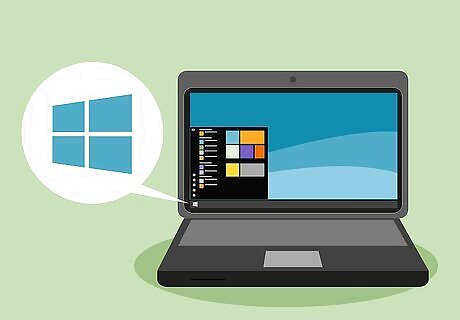
Open Start Windows Start. Click the Windows logo in the bottom-left corner of the screen.
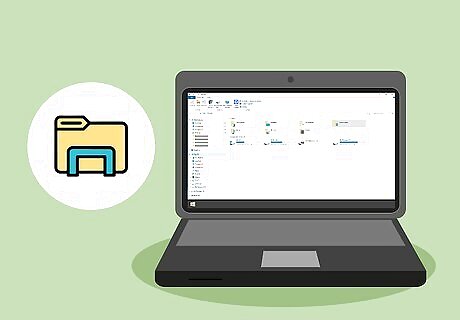
Open File Explorer Windows Start Explorer. Click the grey folder icon in the lower-left side of the Start window. This will open the File Explorer window.

Select your SD card. Click your SD card's name in the left side of the File Explorer window. If you can't find your SD card, click This PC instead, then double-click the SD card's name below the "Devices and drives" heading in the middle of the page.
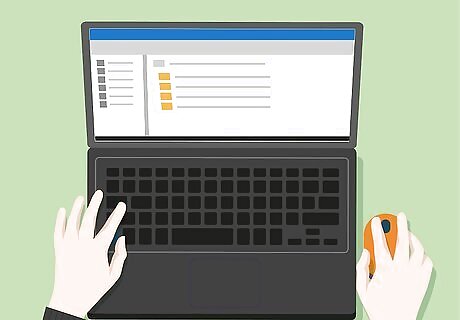
Review your SD card's files. You can scroll through the files and folders on this page to review them, or you can double-click a file or folder to open it.
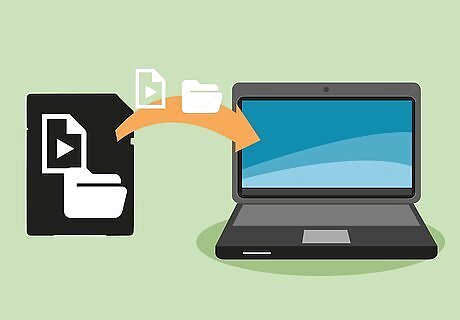
Move files from your SD card onto your computer. To do so: Select a file or folder you want to move. Click the Home tab. Click Move to Click Choose location... Click a folder on your computer (e.g., Desktop). Click Move
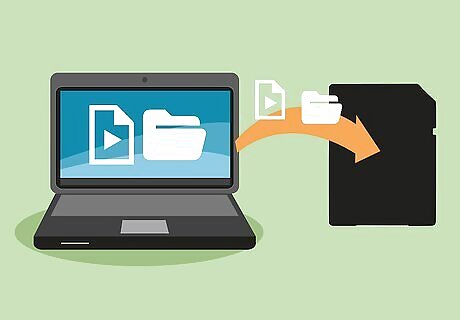
Move files from your computer onto your SD card. This process is similar to moving files from the SD card onto your computer. To do this: Select a file or folder you want to move. Click the Home tab. Click Move to Click Choose location... Click your SD card's name. Click Move
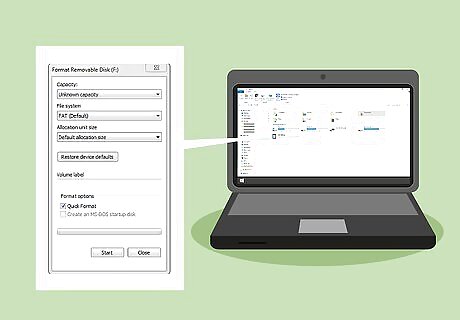
Format your SD card. If your SD card won't open or is incapable of having files moved to it, formatting it will potentially repair the card or make it compatible with your computer. Formatting an SD card will also remove all files on it.
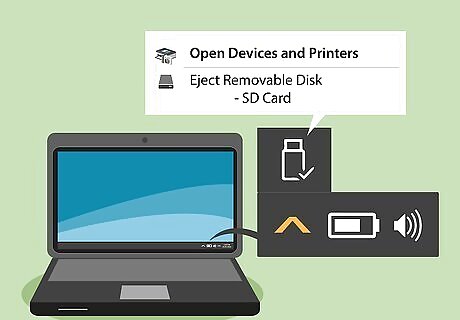
Eject your SD card. Click ^ in the lower-right side of your Windows computer's screen, click the flash drive with a checkmark icon, and click Eject NAME when the option appears. This will ensure that, when you physically remove your SD card from your computer, you don't lose any files.
On Mac
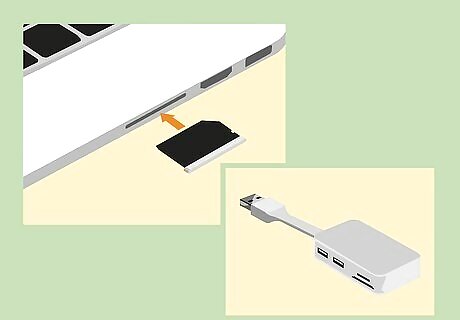
Insert the SD card into your computer's card reader. If your computer doesn't have a card reader, you can purchase an external adapter that connects via USB. MicroSD cards will likely need to be inserted into an SD card adapter to fit into most conventional SD card slots. Many Macs don't have SD card readers.
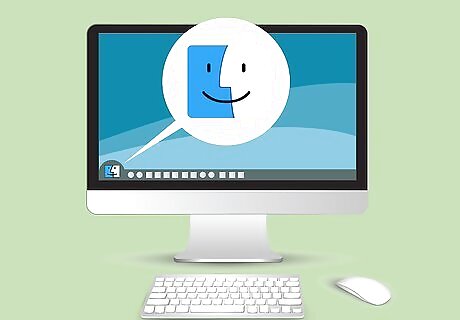
Open Finder. Click the blue, face-shaped icon in your Mac's Dock at the bottom of the screen.
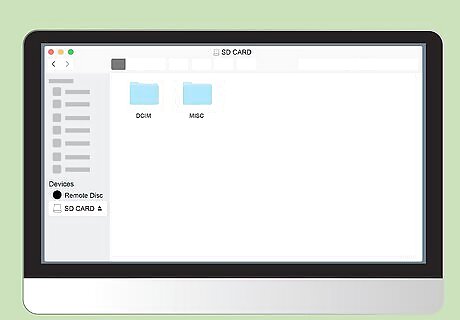
Click your SD card's name. It's in the pane on the left-hand side of the Finder window, just below the "Devices" heading. Doing so will display your SD card's contents in the main Finder window.
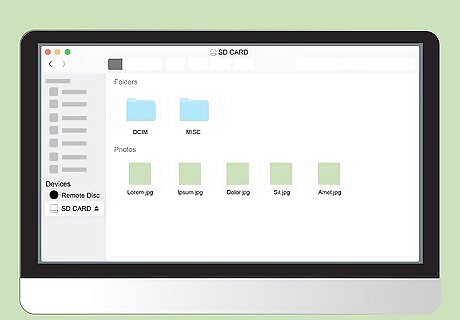
Review your SD card's contents. You can scroll through the SD card's files and folders in the main Finder window, or you can double-click a file or folder to open it.
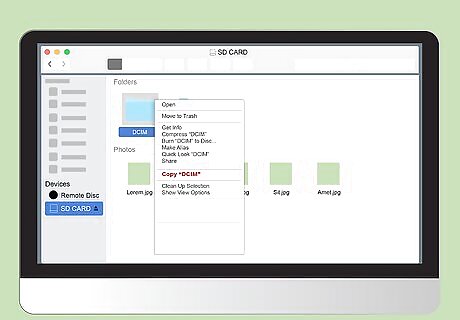
Move files from your SD card onto your Mac. To do so: Select a file or folder in the main Finder window. Click Edit Click Cut (or Copy) Click a destination folder. Click Edit, then click Paste Item or Paste Items.
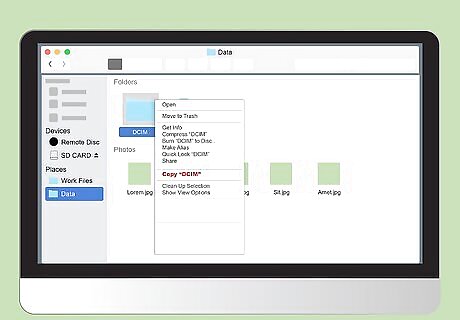
Move Mac files onto the SD card. To do this: Click a folder on the left side of Finder. Select a file or folder in the main finder window. Click Edit Click Cut (or Copy) Click a destination folder. Click Edit, then click Paste Item or Paste Items.
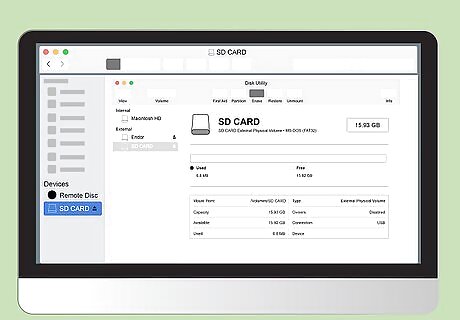
Format your SD card. If your SD card won't open or is incapable of having files moved to it, formatting it will potentially repair the card or make it compatible with your computer. Formatting an SD card will also remove all files on it.

Eject your SD card. Click the "Eject" triangle icon to the right of your SD card's name in the left-hand sidebar in the Finder window. This will prevent your SD card's files from being harmed when you physically remove the SD card from your computer.














Comments
0 comment